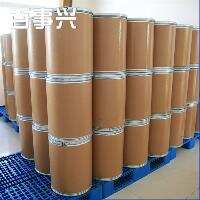Domestic corn supply and demand contradictions are increasingly intensified to see how corn prices will rise in the future.
-
Last Update: 2020-07-30
-
Source: Internet
-
Author: User
Search more information of high quality chemicals, good prices and reliable suppliers, visit
www.echemi.com
the beginning of the 2012/13 grain year, because of the weather, the northeast corn did not go on the market as expected, and then in the three north market (northeast, north, northwest) three-legged supply pattern, as well as the sudden outbreak caused by the decline in the phase of demand, the downward trend of domestic corn prices is more obvious, but also caused panic of market confidence.. A7ybased on independent data from various analytical agencies, a series of divergences on future market prices are endless. While many people in the market are still around the domestic corn prices rise or fall, we would like to ask a few questions to market people:A7yfirst of all, domestic corn production is increasing year after year?. A7yand China Corn Network continuously tracked data analysis for several years, from the overall trend, China's corn production in the context of nearly a decade, basically maintained a steady growth trend. Although there was a certain decline in maize production in the north-east in 2009 due to drought in the north-east, corn production has since returned to the results of years of abundance. Corn production in 2009 was 146 million tons, while in 2012 corn production has reached 181 million tons, an average annual increase of 7.5%. The main driver of the increase in production is the increase in sowing area, which in 2009 was 29.31 million hectares, and in 2012 it has increased to 34.29 million hectares, an average annual increase of 5.4%.. A7ySecond, has the restart of Chinese imports increased substantially in recent years?. A7yIn addition to increased production, the topic of imports has been the subject of sustained attention in recent years. So this answer, the customs data can also give a positive solution. China reopened the door to imported corn in 2010 as it took advantage of falling domestic and international food prices. From 1.57 million tons in 2010 to 1.76 million tons in 2011 to 5.23 million tons in 2012, China's large-scale imports have accumulated to nearly 10 million tons. This amount is equivalent to the average monthly use of domestic feed enterprises. Within the quotas, official imports, some importers' imports and domestic private-sector imports have performed differently.. A7ythird, is the number of wheat replacements increasing this year?. A7yWhile the supply of maize has increased, the supply of corn substitutes has increased simultaneously, further supplementing the supply of corn markets. In the case of wheat, China Corn Network estimates that the feed culture industry used about 8 million tons of wheat in 2009/10, but by 2012/13, the amount of wheat raised has reached 25 million tons, three times that of 2009/10. Thus, since 2009/10, the annual supply of corn has shown a gradual increase. And the increase has always been at a high level.. A7yfourth, supply is increasing, why is the price of corn bucking the trend?. A7yincreased supply and the price of the commodity market should be the normal price law, but the corn market has a different phenomenon, in the context of the increasing supply of corn, corn prices are also showing a gradual upward momentum. Although there is no annual price fluctuations, but overall, the price fluctuations are increasing year by year. Although corn production was reduced by 13.2 million tons in 2009, in 2009/10, the amount of corn sold by the state to the market by auction reached more than 26 million tons before 2009, effectively replenishing the gap in that year's production reduction. Therefore, we can think that the 2009/10 corn production reduction will have little impact on the supply of the market.. A7yfifth, is domestic feeding consumption a trend of just need?. A7ycorn price increases are driven by strong growth in downstream demand and support from national policies. At present, the domestic corn downstream industry to feed farming industry and deep processing industry-based. Among them, the annual consumption of corn in the feed culture industry accounts for 70% of the total consumption. Although the consumption of corn in the deep processing industry has remained stable in recent years, the consumption of the breeding industry has increased significantly. According to the China Feed Industry Association, 2008-2011. Domestic feed production increased from 137 million tons to 180 million tons, an average annual increase of nearly 10%. Although final figures for 2012 production are still available, the Ministry of Agriculture's estimate is also 191-194 million tons. And from the state published pig stock data can also be seen that the overall domestic pig stock growth trend. 2102 reached an all-time high. It can be seen that with the economic development, the consumption level of residents' meat, eggs and milk will improve, the consumption of end products in the animal husbandry industry will show a rigid growth trend.. A7y2008A7y2009A7y2010A7y2010 a7y2011 A7y 2012 A7y average annual pig stock (10,000 head) A7y 4524 3 a7y 4569 6 a7 a a744 a . 45987 A7y 47090 A7y feed production (tons) A7y 13667 A7y 14813 A7y 16202 A7y 18063 A7y - A7y The market generally believes that the breeding industry has entered a low ebb, but due to the rigid demand, as well as the support of national policies, the industry after a short downturn, will again enter the track of rapid development. Feed production is expected to continue to grow in 2013, but the likelihood of a narrower increase is higher. Driven by the increase in feed production, the demand for corn in the breeding industry will continue to grow steadily. . A7y Sixth, Do you admit that the 2012/13 grain year is not productive? . A7y 2012/13 although corn production was again harvested, the national output reached 180 million tons, an increase of nearly 7 million tons. But the effective supply of the market has fallen sharply. This is mainly reflected in last winter and spring continuous precipitation weather, the north-east corn mold high, weight decline, and even some plots can not be harvested and abandoned situation. This disguised loss is also reflected in the revision of China's corn network in the supply-demand balance after entering May. . A7y in addition to the Northeast's own grain quality led to the reduction of supply, the implementation of the Northeast Linzhu corn acquisition policy in the current year, as of May 10 has been in the storage of more than 28 million tons, due to the policy extended to the end of May, so it is expected that the storage volume of more than 30 million tons of the day. It is also one of the reasons that indirectly leads to the decline of grain sources in the current trade circulation in Northeast China. . A7y seventh, you can not ignore from the national decision-making level of support for agriculture A7y to 2013, the central document 1, has been the focus of agricultural development for a decade. We will do document No. 1 for a decade, it is not difficult to see that the country's concern for agriculture, rural areas has deepened step by step, and with the times, can solve the current problems of farmers, solve the problem of export, so that farmers maximize the realization of the benefits of the closely related. In addition to the above, in the State Council, the Ministry of Agriculture, the Ministry of Finance and other major ministries led by the regular meetings, we can often often see the country targeted at new agricultural development issues, can be targeted. Put the benefits to farmers into practice. This is the most beneficial support for China, a large agricultural country, to achieve the basic development of the grass-roots economy. . A7y eighth, has the pace of supply of traders been disrupted? . A7y according to China Corn Network on the market tracking of the past 5 years, in the trader stake, in the past we can find that the beginning of the listing of new grain, traders, grain enterprises, grain banks and other acquisition entities competing to be active in the acquisition market in the production area. In particular, traders can play their own funds, inventory, logistics and other favorable conditions for the market price fluctuations to assume the role of catalystand and regulator. But in the last two years we have found that traders at the beginning of the new grain market, the intensity of intervention in the market is declining, the number of acquisitions is not much. The analysis of subjective reasons is due to the narrowing of the background and profit margin of continuous abundance, and objectively is the result of the large-scale collection and storage of grain in the middle of the grain storage directly subdivided the grain source in the production area. . A7y from the figures, in the past, North-East and North China traders experienced the accumulation of acquisitions, in May and June can release a rhythmic release of about 30-40 million tons of circulation inventory. But as of early May this year, the stock of traders in the two major production areas, according to rough estimates, is less than 10 million tons, breaking the historical law. And far less than in previous years traders can provide the amount of effective supply, invisibly, also reduce the role of traders after entering the cost pricing stage. It is expected that this year when the market is green and yellow, it is difficult to see the traditional multi-traders in full bloom to release inventory, more likely to be only a small number of large acquisition traders, and holding a lower number of inventory than in previous years. In the event of a supply shortage in the future market supply, it is highly likely that the old sayings will be validated; . A7y so, if the above issues, the market is recognized, then the domestic corn market, will be very clear a relationship map. Although the international economic crisis in 2008, the domestic and international economic operating environment is weak, but in the last 5 years, domestic corn prices in the continuous abundance, imported corn increasing, wheat replacement release, feeding consumption just need, the state-led signal strong background, still maintain a stable upward trajectory. . A7y and again, prices have risen sharply as a result of a reduction in U.S. corn production in 2012. China's imports of U.S. corn don't have much of a price advantage. So far, China imported 2.12 million tons of corn in the first six months of 2012/13, and the amount of corn imported decreased in 2012/13. Imports are expected to exceed 4 million tons in the year. . A7y , in addition, after entering the 2012/13 year, wheat prices have risen sharply, and alternative corn in feed has no advantage, resulting in a significant decline in the amount of wheat forfeed this year. The amount of wheat for feed is expected to be about 14 million tons in the year, down 11 million tons year-on-year. . A7y concluded that the overall supply and demand structure of the corn market in 2012/13 was slightly tight, but its phased supply and demand structure was subject to drastic changes. After the listing of new grain, affected by the factors such as corn abundant, high water, large carry-on inventory, corn prices fluctuated lower, farmers appeared panic selling grain, traders de-listed, participation enthusiasm is not high, the market supply and demand structure appears phase imbalance, supply serious surplus. Before the aquaculture industry was about to pick up in April, it also coincided with the avian flu outbreak and the Ya'an earthquake, leading to a further deterioration of the phased imbalance. . A7y but after May 1, as the purchase of China's grain storage, the outbreak gradually faded, the country made it clear that it would continue to raise the minimum purchase price of corn, a number of measures to support the livestock industry through the difficult times. It can be expected that the supply and demand structure of the corn market will shift from oversupply to supply constraints. Perhaps the current domestic corn consumption level is still stuck in the after-effects of the epidemic, before the new listing, import shrank, wheat replacement reduction, strong guidance of policy signals, the future corn prices have no reason to fall? We can now run the price trend as a stage trough, and we can boldly guess that the next price peak is not far away from us! . A7y the beginning of the 2012/13 grain year due to weather conditions, Northeast corn.
This article is an English version of an article which is originally in the Chinese language on echemi.com and is provided for information purposes only.
This website makes no representation or warranty of any kind, either expressed or implied, as to the accuracy, completeness ownership or reliability of
the article or any translations thereof. If you have any concerns or complaints relating to the article, please send an email, providing a detailed
description of the concern or complaint, to
service@echemi.com. A staff member will contact you within 5 working days. Once verified, infringing content
will be removed immediately.







